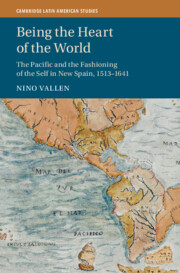This essay reviews the following works:
The FBI in Latin America: The Ecuador Files. By Marc Becker. Durham, NC: Duke University Press Books, 2017. Pp. vii + 322. $27.95 paperback. ISBN: 9780822369080.
The CIA in Ecuador. By Marc Becker. Durham, NC: Duke University Press Books, 2021. Pp. xi + 317. $27.95 paperback. ISBN: 9781478011385.
Movilidad y poder en el sur del Ecuador, 1950–1990. By María Mercedes Eguiguren. Quito: Editorial FLACSO Ecuador, 2019. Pp. viii + 274. Open access e-book. ISBN: 9789978675199.
Peasant Wars in Bolivia: Making, Thinking, and Living the Revolution in Cochabamba (1952–64). By José M. Gordillo. Calgary: University of Calgary Press, 2022. Pp. xiv + 337. $34.99 paperback. ISBN: 9781773854014.
A Concise History of Bolivia. 3rd ed. By Herbert F. Klein. New York: Cambridge University Press, 2021. Pp. xix + 380. $34.99 paperback. ISBN: 9781108948890.
Indigenous Struggle and the Bolivian National Revolution: Land and Liberty. By James Kohl. New York: Routledge, 2021. Pp. xii + 413. $64.95 paperback. ISBN: 9780367471392.
Historical Dictionary of Ecuador. By George M. Lauderbaugh. Lanham, MD: Rowman & Littlefield Publishers, 2019. Pp. xlviii + 322. $96.84 hardcover. ISBN: 9781538102459.
¡Vamos a avanzar! The Chaco War and Bolivia’s Political Transformation, 1899–1952. By Robert Niebuhr. Albuquerque: University of New Mexico Press, 2021. Pp. xii + 260. $60.00 hardcover. ISBN: 9781496207784.
Los inconformistas del Centenario: Intelectuales, socialismo y nación en una Bolivia en crisis (1925–1939). By Pablo Stefanoni. La Paz: Plural Editores, 2015. Pp. 383. ISBN: 9789995416430.
The Bolivia Reader: History, Culture, Politics. Edited by Sinclair Thomson, Rossana Barragán, Xavier Albó, Seemin Qayum, and Mark Goodale. Durham, NC: Duke University Press, 2018. Pp. xx + 719. $35.95 paperback. ISBN: 9780822371526.
